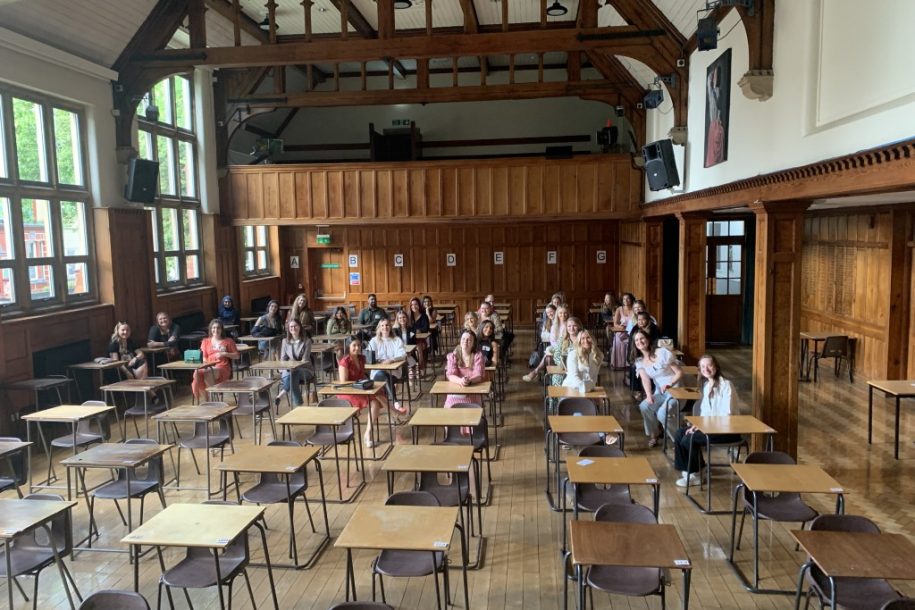The Loughborough High School Curriculum

As you look through all of the inspiring women who have walked the corridors of LHS, both those that have been featured as part of our Women’s History Month campaign and also the countless others, it is evident that LHS girls go on to do a wide variety of exciting careers and follow a variety of pathways. Since 1850, when the school opened, expectations of women and women’s expectations have changed and evolved massively, from the ‘Angel in the House’ ideal of the mid-Victorian period, to the wars when women took over men’s work as they went to fight at the front, all the way to now.
It was only in the mid-19th century that the general society realised that it would benefit from the education of girls. Prior to this, society held a long-established prejudice towards girls’ education, believing that women were incapable of intellectual thought and that their place was mainly within the home. An overwhelming stereotype of the Victorian era is the two spheres ideology: the idea that the men belonged in the public sphere in the world of work and the women in the private domestic sphere at home. Whilst this is a simplification of the period, and in truth it is much more complicated, there is no doubt that this ideology was prevalent within society. It was only in the 1870s, after the realisation that many women, including middle-class women, had to earn their own living, that education for girls was seen as vital for them to lead productive lives.
This idea was realised earlier by the Burton Trustees, who began making provisions for girls’ education in the 1840s. In 1929, in celebration for the 50th anniversary of Loughborough High School’s move to Burton walks, Miss Bristol wrote in the school magazine “Loughborough may be proud of the fact that its ancient Grammar School foundation was made available for a girls’ school years earlier than was the case with much richer foundations in larger towns.” This quote highlights not only how LHS was a pioneer in their aim of educating girls, but also suggests the school’s and Governor’s aim of wanting to remain innovative and up to date with the reforms in girls’ education.
The education of girls vs boys has been closely related to their expectations of life, and therefore there is a continued idea that the curriculum within the past has been inherently gendered, with girls being taught different subjects to boys to align with these differing expectations. Is this the case? How has the curriculum at LHS changed from when it first opened in 1850? How was it affected by and equally reflects the changing expectations and role of women within society?
We can see the developments of the curriculum in various ways, including testimonies and memories of alumnae and teachers, report cards, prospectuses, governors meeting minutes and many more. Both internal and external sources affected the curriculum and were affected by it, and the changes in what girls wanted to do. Although, a particular way in which we can see these changes is through changes and developments in the school facilities as the school has grown and society has changed, highlighted particularly through appeal campaigns and building plans.
Click here to read about how the main curriculum has changed.
Click here to see how Domestic Science or Food Tech has changed.
Click here to find out about the changes in Science.
Higher Education and University
Even if girls went to school for some years, acquiring a rounded education, which included classical training, they did not always stay until the end, unlike boys who were more often expected to stay in school. Girls were often taken out of schooling early to take on domestic duties at home, including caring for relatives or housework. In the school magazines, published from 1921 onwards, Miss Bristol urges to get girls to stay on longer at school in her letter, often enumerating the merits of occupations such as nursing.
Gradually over the course of the 20th century, girls were staying on longer at school and into the sixth form which grew in size. This is particularly clear through the acquiring of university degrees. The panelling in the LHS hall displays not only the names of past Head Girls from 1897, but also those alumnae who achieved scholarships and university degrees. Now we can understand the importance of schooling in getting into university today and in the past, it was equally important.
However, after the 1960s, the display boards stop, with nowhere else displaying the girls that achieved degrees. This is not because there were no girls that attained university degrees from this point onwards, but that there were too many girls who were achieving this, highlighting a shift in what most girls did after they left school.
In the time since the school’s founding (in 1850) and in comparison to the women and alumnae of today, you can see how women and girls have come a long way – in terms of their expectations of their life and career. This work continues in the school today.
